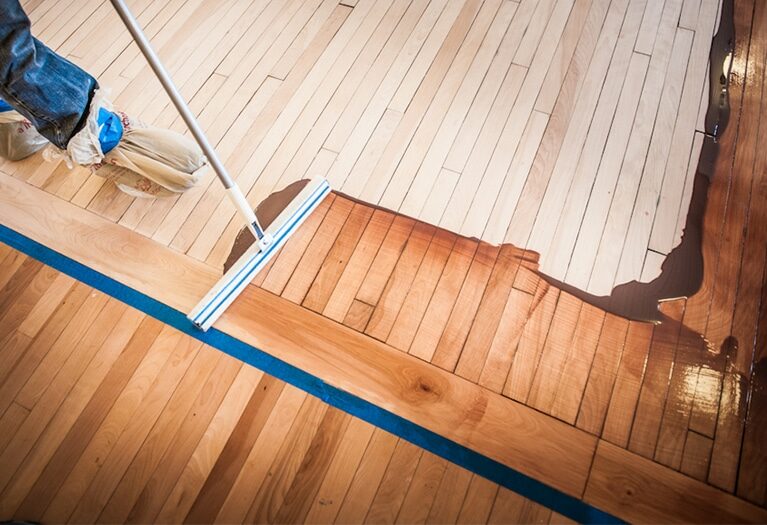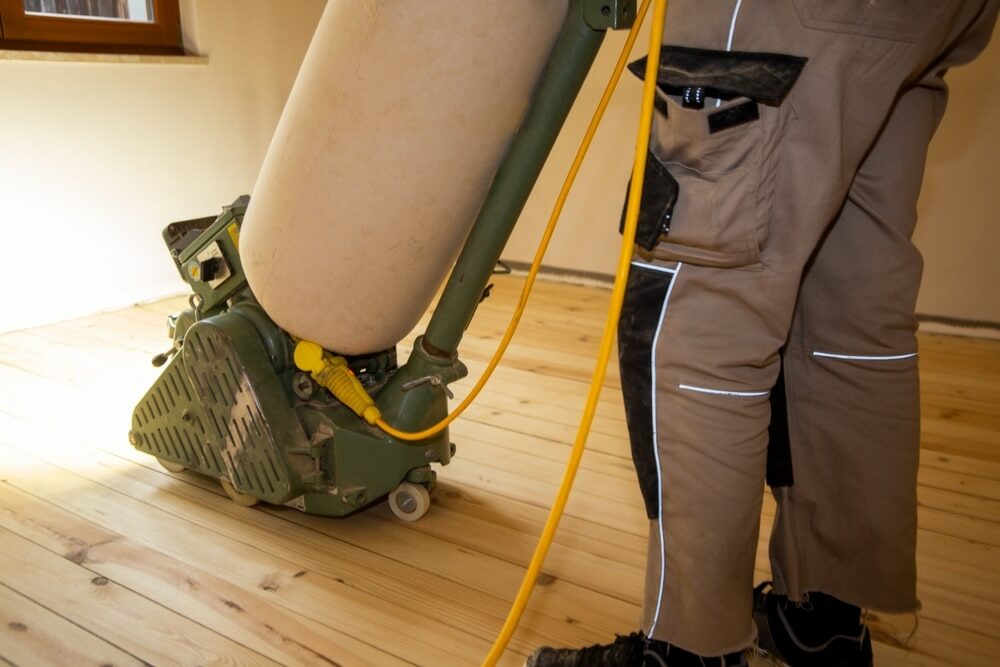London:
Nationwide:
The Role of Hand Sanding in Floor Restoration
Posted on January 8, 2024
Floor sanding techniques
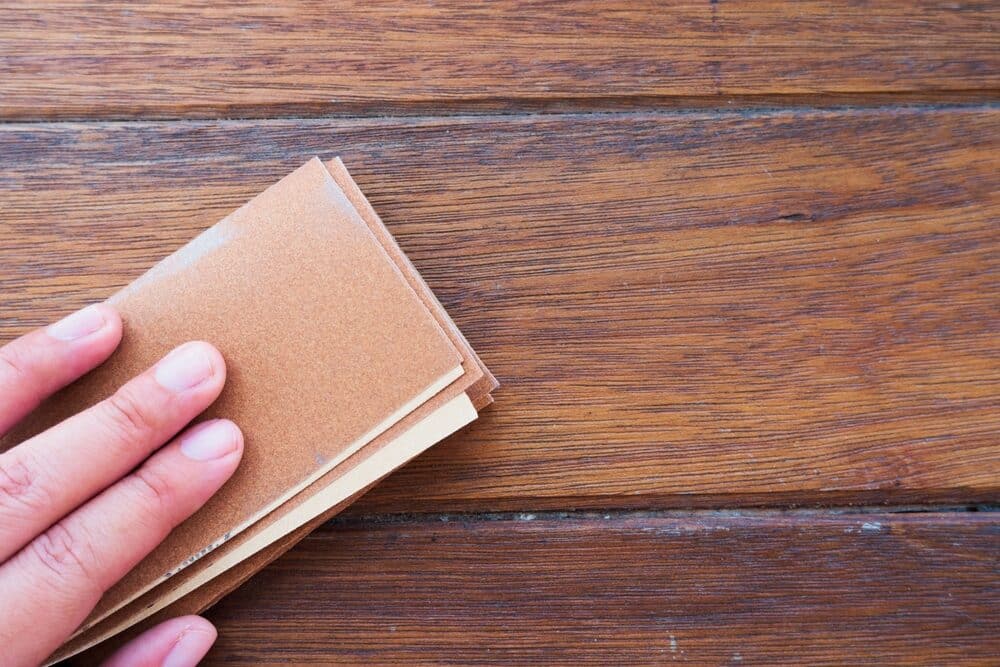
Revealing the Beauty: The Significance of Hand Sanding in Floor Restoration
In the realm of interior design, the significance of flooring cannot be overstated. It serves as the foundation upon which the entire aesthetic of a space is built. Over time, however, even the most exquisite floors may lose their lustre, succumbing to the wear and tear of daily life. This is where the art of restoration steps in, breathing new life into tired and worn-out flooring. Among the myriad techniques employed in this restoration journey, one often overlooked but crucial method is hand sanding.
In this blog post, we embark on a journey into the world of floor restoration and explore the pivotal role that hand sanding plays in this meticulous process. We will delve into the intricacies of hand sanding, understanding its benefits, the artistry it entails, steps for effective execution, and the challenges that come with it. Moreover, we will discuss how hand-sanding can be seamlessly integrated with other techniques to achieve breathtaking results. So, join us on this enlightening exploration as we uncover the hidden gem of hand sanding in the restoration of flooring.
Flooring not only enhances the visual appeal of a room but also contributes to the overall ambiance and comfort of a space. A well-maintained floor exudes elegance and sophistication, creating an inviting environment for both residents and visitors. Yet, as the years pass, even the finest floors may begin to show signs of age—scratches, discoloration, or a dullness that diminishes their former glory. In such moments, the decision to embark on a restoration journey becomes paramount, and hand-sanding emerges as a hidden gem in the world of floor refurbishment.
Hand sanding is an artisanal approach to wood floor restoration, a craft that marries the finesse of human touch with the precision of time-tested techniques. In this blog post, we will not only explore the practical aspects of hand sanding but also delve into the intangible qualities that make it an art form. We will discuss the benefits it offers, the challenges it presents, and how it can be seamlessly integrated with other restoration techniques. As we unravel the mysteries and intricacies of hand sanding, you will come to appreciate its vital role in breathing new life into your flooring, preserving its history, and bringing back the timeless charm it once possessed.
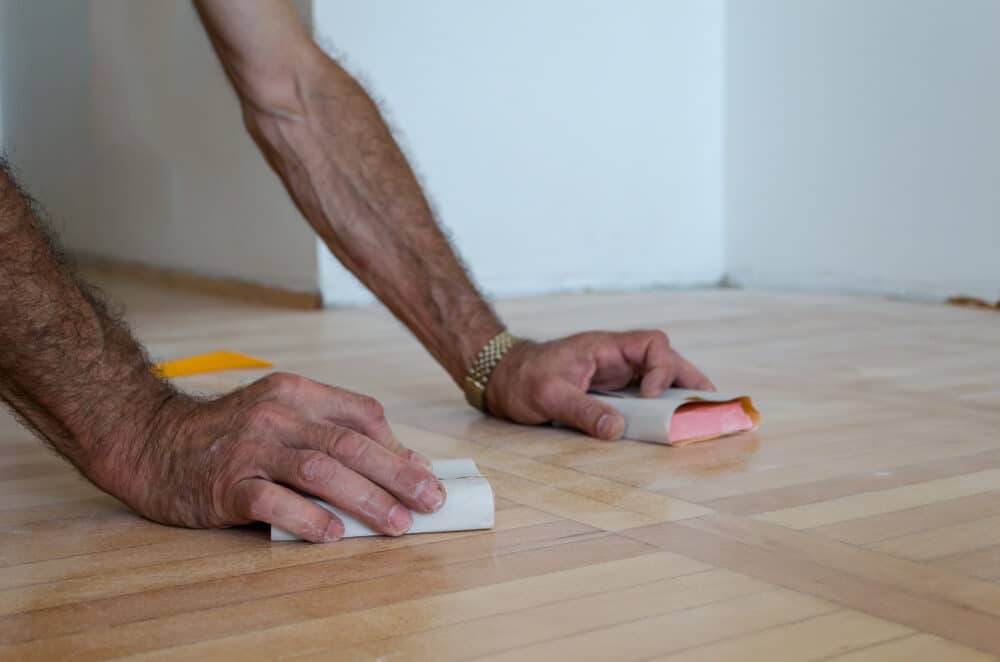
Understanding the Restoration Process
Before we immerse ourselves in the finesse of hand sanding, it is crucial to grasp the broader context of the floor restoration process. The decision to restore a floor is often driven by the recognition that it has begun to lose its lustre or has succumbed to the inevitable wear and tear of daily life. Identifying the need for restoration at the right moment is the first step on this transformative journey.
The choice of restoration method depends greatly on the type of flooring material you have. Whether it’s a hardwood floor, a parquet masterpiece, or an ornate vintage design, each material demands a tailored approach. Sanding, however, remains a universal technique that finds its place in almost every restoration project. It is the foundation upon which the entire process is built, akin to the canvas upon which an artist begins their masterpiece.
The Intricacies of Hand Sanding
Hand-sanding, often underestimated in its complexity, is a craft that demands a unique blend of skill, patience, and artistry. This method entails using sandpaper by hand under the expert guidance of a restorer. While it may appear straightforward, hand sanding reveals its intricacies when one delves deeper into its artful execution.
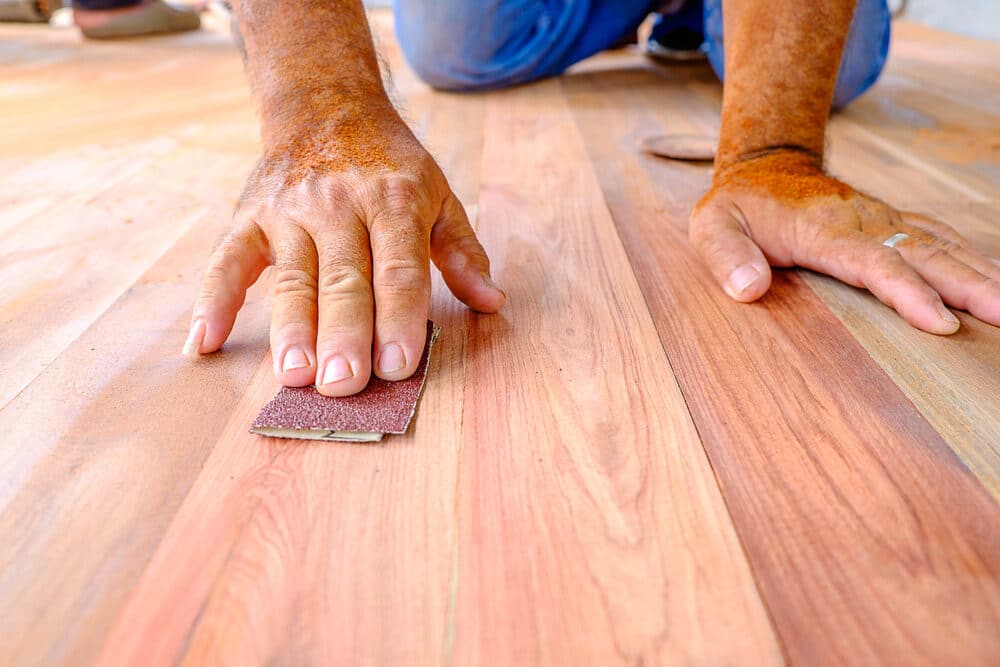
Tools and equipment
At first glance, the tools and equipment for hand sanding may seem minimal—sandpaper and a sanding block, perhaps. However, it’s the skill with which these tools are employed that makes all the difference. The craftsman’s choice of sandpaper grit, the pressure applied, and the angle of the strokes all contribute to the precision of the process.
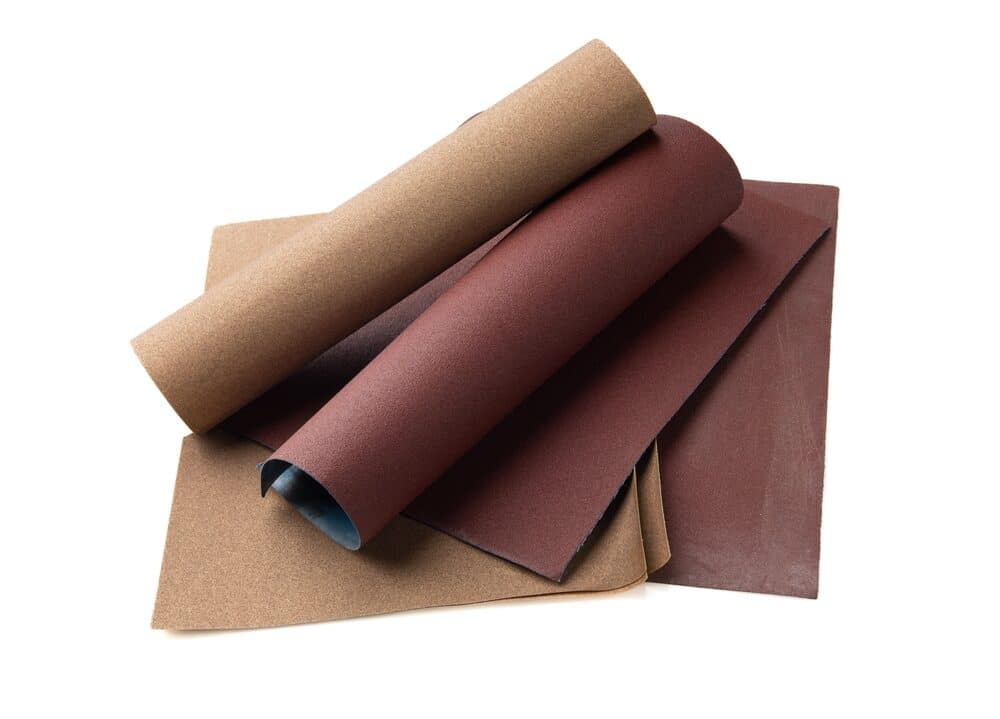
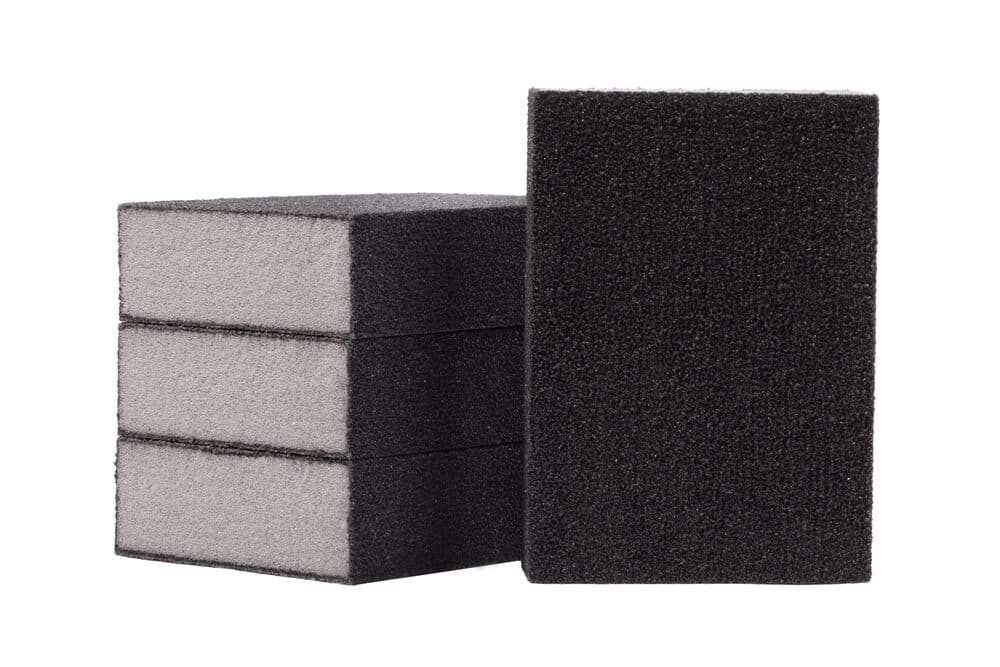
Advantages of hand sanding
Hand sanding offers a unique set of advantages that set it apart from mechanised methods. Firstly, it provides an unparalleled level of precision and control. Each stroke is a deliberate act, allowing the restorer to target specific imperfections or intricacies in the wood. This precision is challenging to achieve with machine sanding.
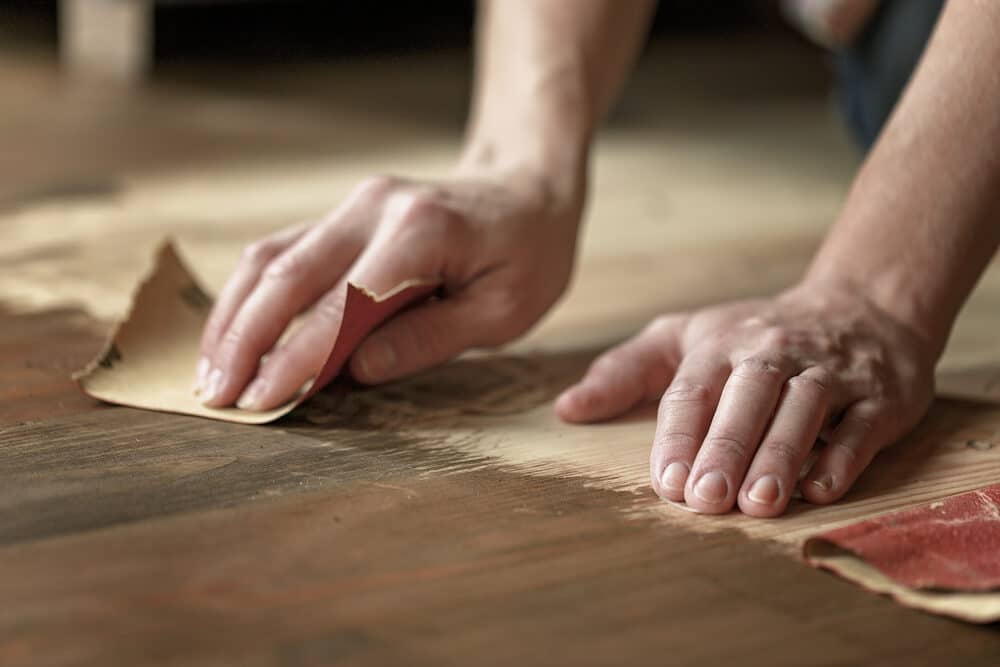
Preservation of Original Charm
In the realm of floor restoration, preserving the original charm of a floor is often of utmost importance, especially in historical homes or properties with unique character. Hand sanding excels in this regard. It allows for careful restoration while safeguarding the floor’s innate beauty and historical significance.

Benefits of Hand Sanding in Floor Restoration
The control and precision that hand sanding offers set it apart. The skilled artisan has the ability to delicately address specific imperfections or intricacies in the wood. Each stroke is a deliberate act, ensuring that the restoration process is finely tuned to the unique needs of the floor. This level of precision is challenging to achieve with mechanised methods.
Preservation of Original Charm
In the world of floor restoration, especially in historical homes or properties with distinctive character, preserving the original charm of the flooring is paramount. Hand sanding excels in this regard. It allows for meticulous restoration while safeguarding the floor’s innate beauty and historical significance. This artful approach ensures that the floor continues to tell its story.
Minimising dust and noise
Hand sanding offers the added advantage of minimising the dust and noise often associated with machine sanding. While no restoration process is entirely dust-free or silent, hand-sanding creates a more harmonious environment for both craftsmen and homeowners. This reduction in disruption during the restoration journey is a welcomed benefit.
Customisation and artistry
Hand sanding also enables a high level of customisation and artistry. Skilled artisans can use this technique to create unique designs, patterns, or distressing effects, adding a personal touch to the restoration project. This level of creativity and individuality is a hallmark of hand-sanding.
The Artistry of Hand Sanding
Hand sanding is far more than a mechanical process; it is a refined art form that demands skill, patience, and a deep understanding of the medium. It is the human touch, guided by an artisan’s expertise, that distinguishes hand-sanding as true craftsmanship.
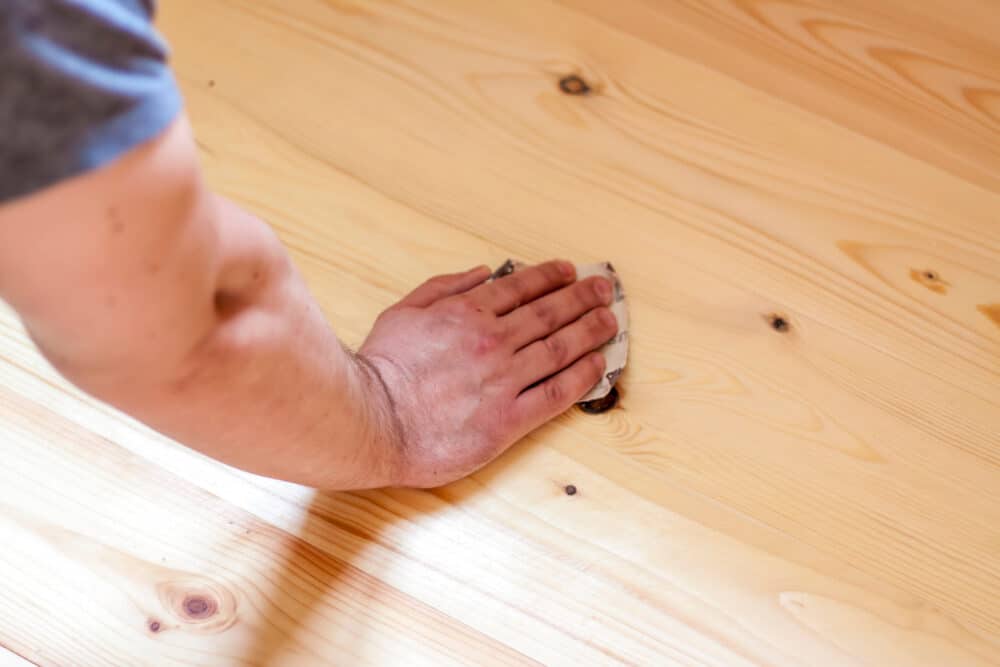
In the world of floor restoration, hand sanding is the embodiment of the artisan’s spirit. It is the marriage of the tactile, the visual, and the historical. Each pass of the sandpaper is a deliberate stroke, an act of precision that only the trained hand can execute. It’s a dance between the craftsman and the wood, a symphony of movement and finesse.
The results of hand-sanding are nothing short of spectacular. Beyond the mere restoration of a floor, it allows for a level of customisation and personalisation that is unparalleled. Artisans can blend different techniques to create unique finishes, enhance the natural beauty of the wood, or achieve specific design objectives. It’s not just about making the floor look new; it’s about elevating it to a work of art, a testament to the dedication and passion of the restorer.
Hand sanding is an embodiment of tradition and skill passed down through generations. It’s an appreciation for the heritage of woodwork and a commitment to preserving its legacy. As we journey further into the world of hand sanding, we will explore the techniques, tools, and secrets that underlie this art form. Join us as we uncover the beauty and intricacy of hand-sanding in the realm of floor restoration.
Steps to Effective Hand Sanding
Effective hand sanding is a nuanced process that demands patience, precision, and a methodical approach. Whether you’re a seasoned artisan or a DIY enthusiast, following a structured set of steps is essential to achieving a flawless finish and breathing new life into your flooring. Here’s a guide to the key steps in the art of hand-sanding:
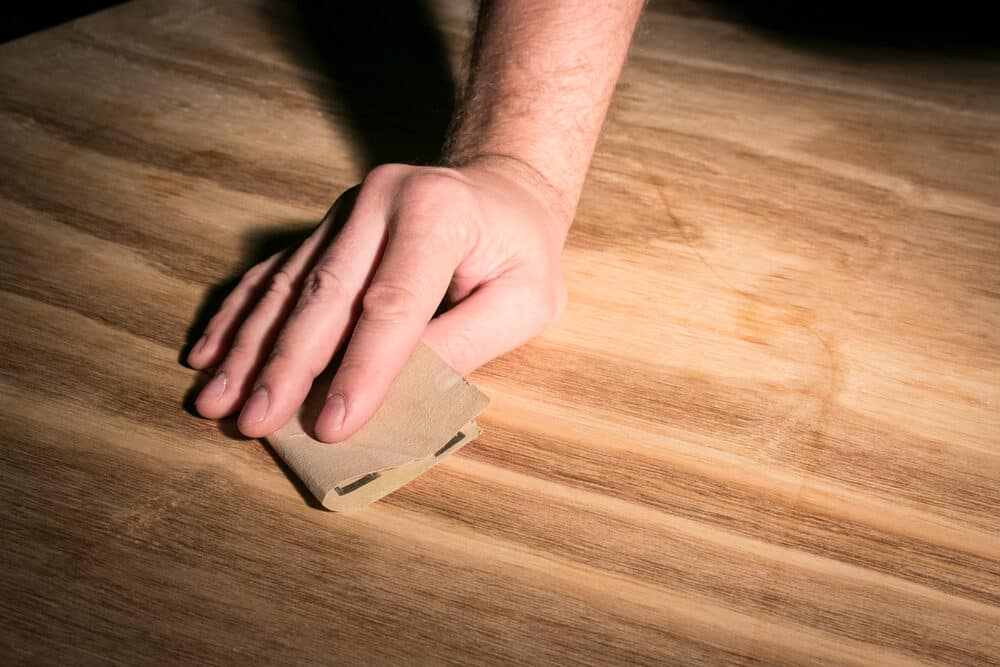
Preparation and Safety Measures:
Begin by preparing the area for sanding. Remove all furniture and obstacles from the room to ensure easy access. Use protective gear such as safety goggles, a dust mask, and ear protection to safeguard yourself from dust and noise. Cover adjacent areas with drop cloths or plastic sheeting to minimise dust spread.
Choose the Right Sandpaper:
Select the appropriate sandpaper grit for your project. Start with a coarse grit (around 40–60) to remove imperfections and progress to finer grits (100–120, 150–180, and finally 220) for a smoother finish. Always follow the manufacturer’s recommendations for your specific type of wood.
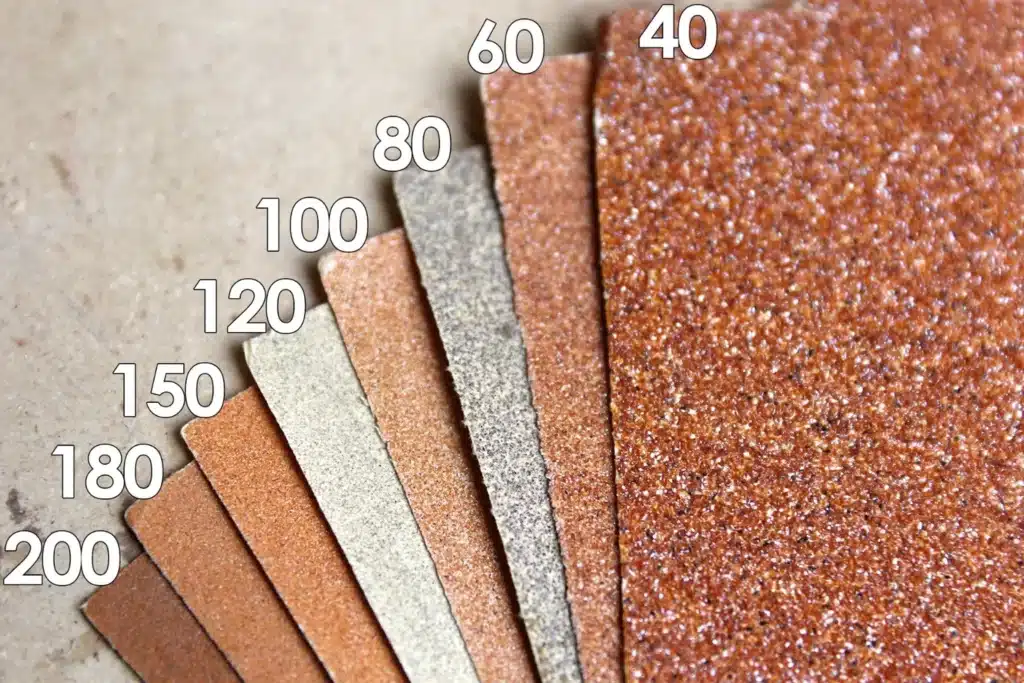
Sanding Technique:
Hold the sandpaper firmly, folding it around a sanding block if necessary for better control. Sand with the grain of the wood, using long, even strokes. Avoid applying excessive pressure, as it can lead to uneven sanding or over-sanding.
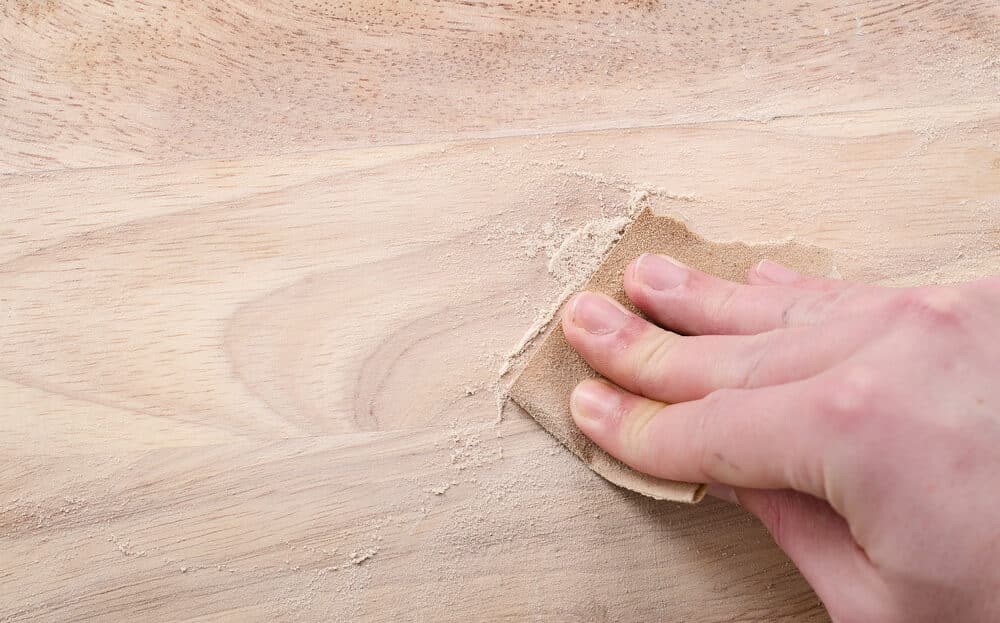
Gradual Progression:
Begin with the coarsest grit to address deep scratches or imperfections. Once the surface is even, switch to finer grits progressively. This gradual refinement ensures a smooth transition between grits and reduces the risk of leaving visible marks on the wood.
Check for uniformity:
Periodically stop and inspect the sanded area for uniformity. Look for any remaining scratches or imperfections. If necessary, revisit problem areas with the appropriate grit until the surface is consistent.
Remove Dust:
As you sand, dust will accumulate on the surface. Use a vacuum cleaner or a tack cloth to regularly remove dust and debris. Keeping the area clean prevents particles from becoming embedded in the wood during sanding.

Edge Sanding:
For edges and corners that are challenging to reach with large sanding tools, fold the sandpaper and sand by hand. Exercise caution to maintain even pressure and avoid over-sanding the edges.
Final Fine Sanding:
Once you’ve achieved a smooth and even surface with the finer grits, switch to the finest grit (usually 220) for a final, light sanding pass. This step ensures a polished and satin-like finish.
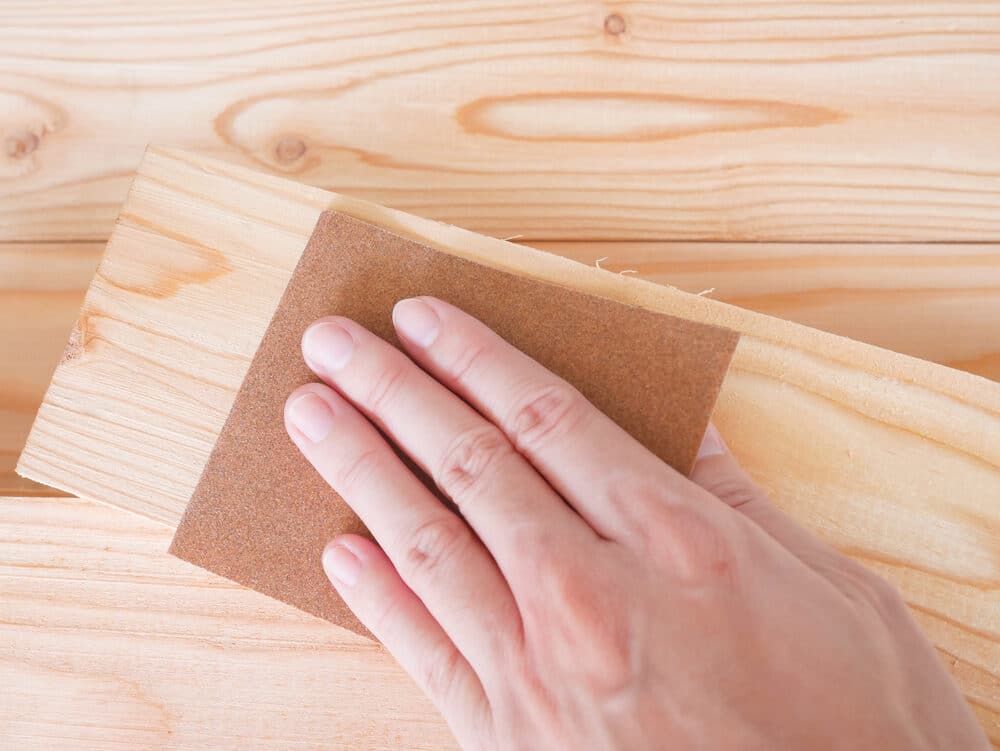
Clean Up:
After sanding is complete, thoroughly clean the area to remove all dust and debris. Vacuum the room, wipe down surfaces, and remove any protective coverings.
Challenges of Hand Sanding
While hand sanding is a revered technique in the world of wood floor restoration, it is not without its set of challenges. These challenges, though surmountable with skill and patience, are important to acknowledge as they can impact the success of the restoration process. Here are some of the common challenges faced when employing hand sanding:
Time- and labor-intensive:
Hand sanding is a meticulous process that can be time-consuming, especially for larger areas. It requires a significant amount of physical effort and can be tiring for the person performing it. This challenge can deter some from choosing hand sanding as their preferred method.
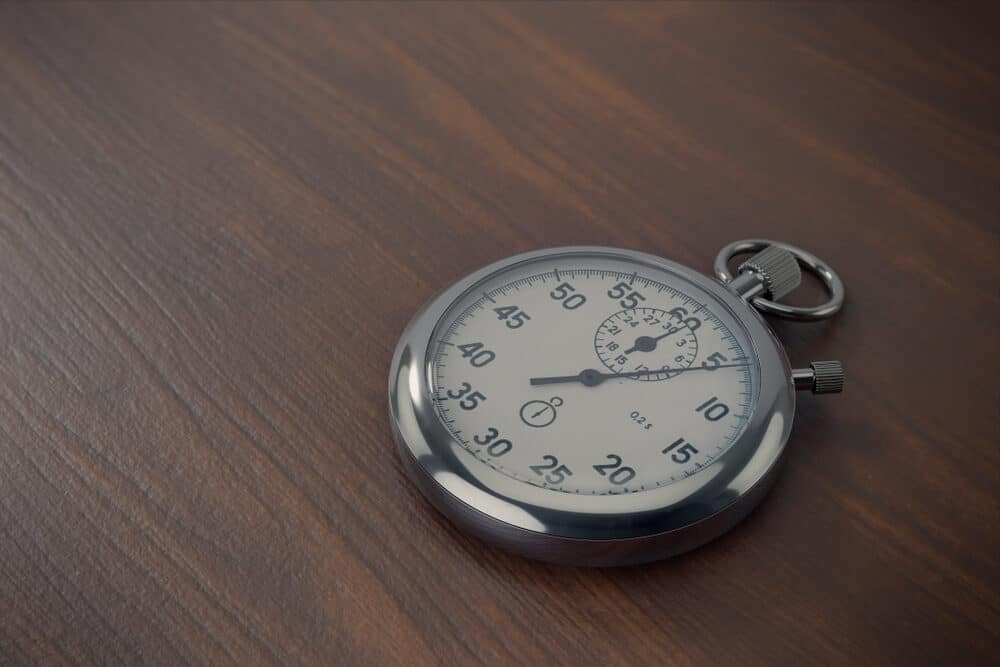
Achieving Uniformity:
Ensuring uniformity in the sanding process can be a challenge. It’s essential to maintain consistent pressure and strokes to avoid uneven surfaces or visible sanding marks. Inexperienced individuals may struggle to achieve the level of precision required for a flawless finish.
Avoiding Over-Sanding:
Over-sanding is a risk associated with hand sanding. If excessive pressure is applied or if the same spot is sanded for too long, it can result in the removal of too much wood, causing irreversible damage. This requires a keen eye and a delicate touch to prevent.
Skill and Experience Required:
Hand sanding is a skill that improves with experience. Novices may find it challenging to achieve the same level of finesse and precision as seasoned professionals. It can take time and practice to become proficient in this art.
Limited Coverage:
Hand sanding is best suited for smaller or intricate areas. Covering large spaces entirely by hand can be impractical and time-intensive. As a result, it may be necessary to complement hand sanding with machine sanding for larger floor areas.
Dust Management:
While hand sanding generates less dust compared to machine sanding, it still produces dust that can be bothersome. Proper dust management, including using a dust mask and having adequate ventilation, is essential to maintaining a clean and healthy work environment.
Physical Strain:
Hand sanding can be physically demanding, especially when working on surfaces at various heights or in awkward positions. It’s important for those engaging in hand sanding to be in good physical condition and to take regular breaks to prevent fatigue or strain.
Combining Hand Sanding with Other Techniques
Hand sanding, with its unmatched precision and artistry, stands as a cornerstone of floor restoration. However, it doesn’t have to work in isolation. In fact, it can be seamlessly integrated with other restoration techniques to enhance and complement the overall outcome. Here, we explore how hand sanding can be combined with other methods to achieve stunning results:
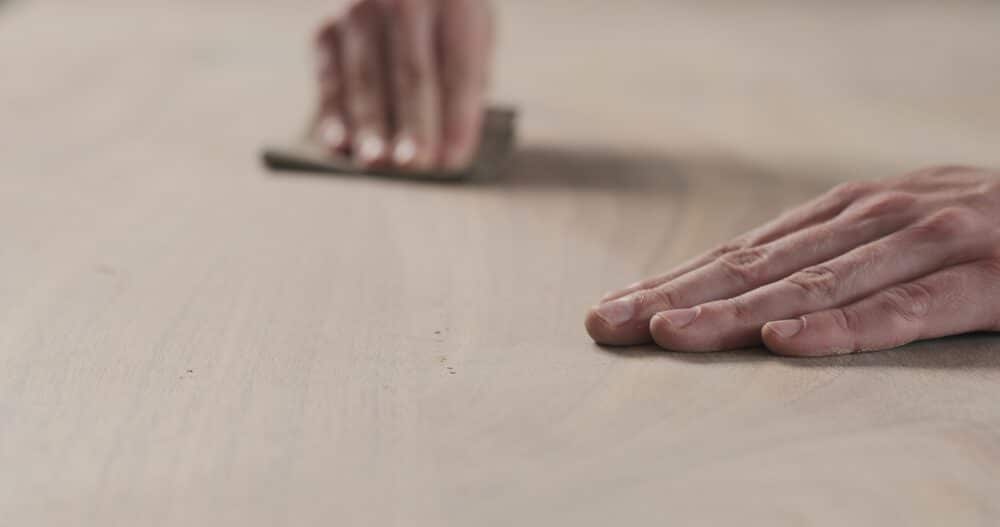
Machine Sanding:
Hand sanding and machine sanding can be a dynamic duo when it comes to floor restoration. Machine sanding is highly efficient for covering large areas quickly. Start with machine sanding to remove the bulk of imperfections, and then fine-tune the details with hand sanding. This combination ensures a balance between speed and precision, resulting in a flawless finish.
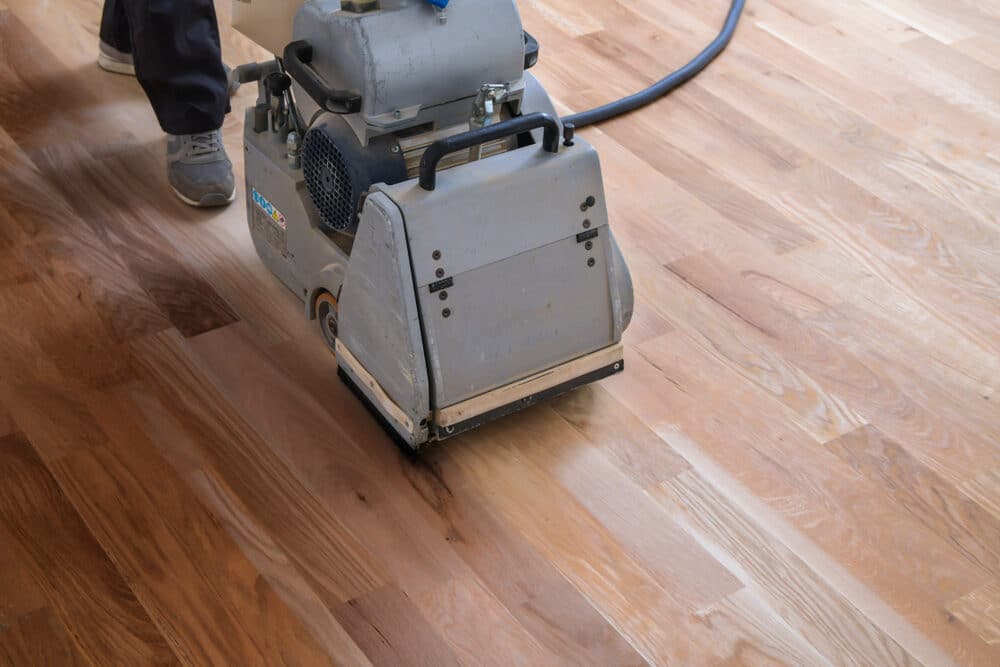
Staining:
Staining is often used to alter the colour of the wood or enhance its natural beauty. Hand sanding plays a crucial role in preparing the surface for staining. By hand sanding, you can ensure that the wood is uniformly smooth and ready to absorb the stain evenly. After staining, hand sanding can be employed to blend and feather the edges, achieving a seamless transition between stained and unstained areas.
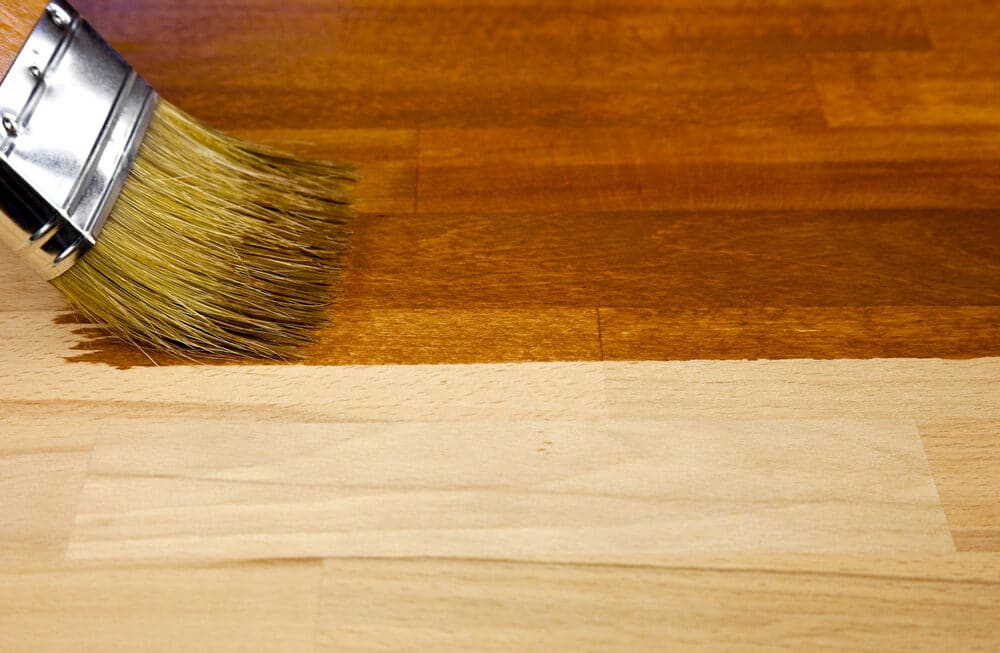
Finishing:
The final step in floor restoration involves applying a protective finish, such as varnish or polyurethane. Hand sanding can be used to smooth the surface between coats of finish, ensuring a silky-smooth and even result. It’s especially important to hand sand between coats to remove any imperfections and achieve that glass-like finish.
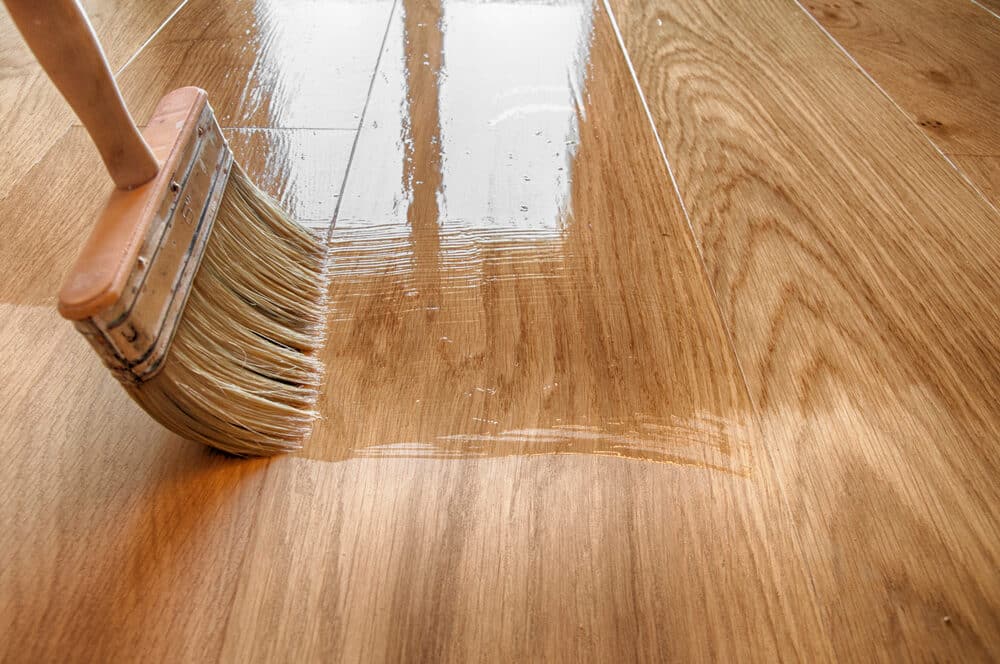
Customisation:
Hand sanding allows for intricate customisations and artistic detailing that machine sanding cannot replicate. Skilled artisans can create unique designs, patterns, or distressing effects through hand sanding, adding a personal touch to the restoration project.
Edge and Corner Work:
Machine sanders may struggle to reach edges and corners effectively. Hand sanding is invaluable for precisely sanding these challenging areas, ensuring that no part of the floor is left untouched.
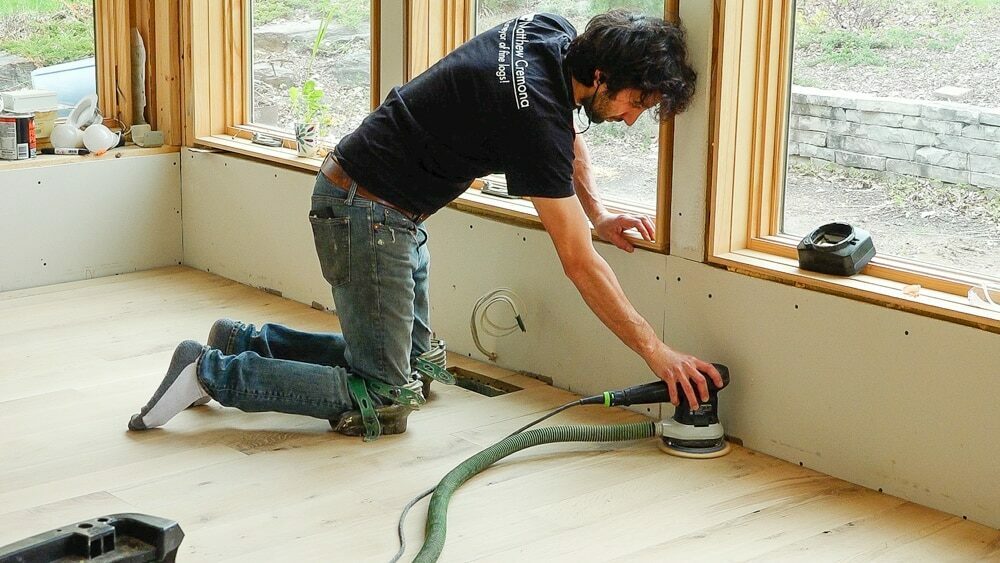
Detail Work:
Some floors may have intricate details or inlays that require extra care. Hand sanding is ideal for delicately sanding these areas without risking damage.
Restoring Heritage Floors:
In cases where the goal is to preserve the historical authenticity of a floor, hand sanding is often the method of choice. It allows for the gentle restoration of aged wood, ensuring that the floor retains its unique character and charm.
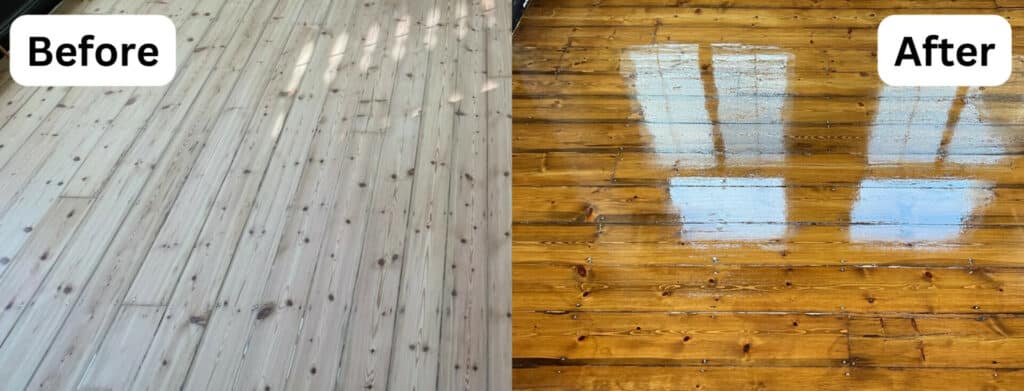
Conclusion
In the intricate world of floor restoration, hand-sanding stands as a testament to the marriage of artistry and practicality. As we conclude our exploration of the vital role of hand sanding in this transformative journey, we find ourselves immersed in the beauty and precision that this craft offers.
Hand-sanding, far from being a mere mechanical process, emerges as an art form in its own right. It is the gentle touch of a skilled artisan’s hand that distinguishes this method. With each stroke and each pass of the sandpaper, it becomes evident that hand sanding is a dance between the craftsman and the wood, a symphony of movement and finesse.
The benefits of hand-sanding are manifold. Its precision and control, preservation of the original charm, and reduction of dust and noise make it a preferred choice for those who seek excellence in restoration. Yet, hand sanding is not without its challenges; it can be time-consuming, demanding of skill and experience, and physically taxing. However, these challenges are surmountable for those who are dedicated to preserving the beauty of their flooring.
Moreover, hand sanding need not work in isolation. It seamlessly integrates with other restoration techniques such as machine sanding, staining, and finishing, allowing for a harmonious blend of efficiency and precision. The results speak for themselves, with restored floors that not only look exquisite but also tell a story of dedication, artistry, and craftsmanship.
As we reflect on the journey into the world of hand sanding, we find that it is not just about restoring floors; it is about preserving history, celebrating heritage, and enhancing the aesthetics of our living spaces. Hand-sanding breathes new life into tired and worn surfaces, transforming them into works of art that stand the test of time.
So, whether you’re a restoration professional or an enthusiastic homeowner embarking on a DIY project, remember the importance of hand sanding. It is a craft that transcends time, creating floors that are not merely functional but also pieces of enduring beauty. In the realm of floor restoration, hand sanding is the artistry that elevates your space from the ordinary to the extraordinary, ensuring that your flooring becomes a source of pride and admiration for generations to come.

Sanding
We provide virtually dust-free sanding with our continuous belt machinery with mobile extraction units, giving you a safer environment for your family.
Oiling
This organic finish not only adds beauty to your home but also has exceptional water-repellent characteristics, making it easier to clean and maintain.
Waxing
This natural floor finish offers the softest and most mellow appearance – and leaves your floor able to breath.
Buffing
Using soft buffing machines (and hand-polishing where required) will bring a wonderful sheen to your newly-finished floor.
Repairs
We offer a full assessment of your wooden floors to determine what repairs are needed to provide the perfect working surface for the later stages of sanding, staining and sealing.
Restoration
We offer a comprehensive restoration process designed to address floors that are improperly fitted or damaged over time through wear and tear.
Request a fixed price quote for your wood floor restoration now
Simply enter your postcode below to get started.
Services
Wood Floor Sanding Wood Floor Restoration Wood Floor Scratch Repair Squeaky Wood Floor Repair Parquet Floor Sanding Parquet Floor Restoration Commercial Floor Sanding Church Floor Sanding Community Centre Floor Sanding School Floor Sanding Gap Filling Gap Filling with ResinCopyright © Mr Sander®
Privacy & Cookies Terms & Conditions Complaints Procedure Cancellation Rights Sitemap